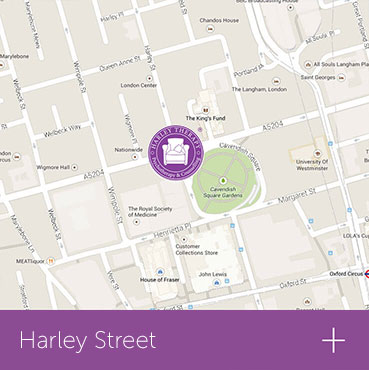Struggling to get to the root of past trauma? Or feel like you are going in circles talking about your issues and need something more? Brainspotting therapy might be the intervention for you.
What is brainspotting therapy?
The idea behind brainspotting is the revolutionary discovery that where we look actually affects how we feel. When we talk about certain experiences or beliefs, we unconsciously orient our eyes in a certain place.
By identifying the ‘gaze spot’ where we feel most activated around a certain issue, then consciously maintaining it, we can trigger forgotten memories and stuck emotions to come to the surface. From there our body and mind can quickly process them, and we can start to feel better.
Is brainspotting good for anxiety?
Anxiety can be a way of thinking that arises from a childhood where we had to be 'on guard', as life seemed dangerous or we felt unsupported. Brainspotting can help relieve the emotional charge around difficult past experiences and traumas, meaning you can see your anxiety lessen.
Our welcoming Harley Street therapy clinic
We offer brainspotting therapy with the highly experienced, registered therapist Stefan Walters in our prestigious Harley Street clinic in central London.
If you’re unable, or prefer not to come for therapy in person, online therapy is another way to seek support from Harley Therapy. All therapists offer online therapy sessions using platforms such as Facetime, Teams or Zoom. Therapy sessions last for 50 minutes and our fee structure is very simple.
Call us to discuss your options, or book your first session now with our online booking form.
What is a session like?
During a brainspotting session your therapist will create a calm, balanced environment for you to feel safe in, then you'll work together to find a situation or memory you'd like to work on. They will observe where your eyes naturally go around this situation, then use a pointer to hone in on an exact 'gaze spot' you feel most emotionally activated at.
As you maintain your eyes on this spot, your therapist will support you as you mindfully observe and sit with the thoughts, feelings, and bodily sensations that arise. They might gently point out reactions you seem to be having, and remind you to breathe, helping you process and possibly reach an ‘anchor memory’, the deeper root of an issue.
What are the benefits of brainspotting therapy?
- bring forgotten difficult memories to the surface and process stuck emotions
- navigate trauma without having to describe it in triggering detail
- lower stress and tension in your body
- let go of long-held unhelpful belief systems
- help performance issues and anxiety
- deal with fears and phobias
- unblock your thinking and creativity.
Process your past and move forward at Harley TherapyTM
Pyschological therapist Stefan Walters has over 15 years of experience working with individuals, couples, and families in both the UK and America. He creates a warm, supportive space for you to work on general mental health issues like anxiety, and is an expert in addiction, trauma, and relationships. As well as brainspotting he offers CBT, emotionally-focused therapy, systemic psychotherapy, narrative therapy, and Gestalt therapy.
What is the difference between EMDR and brainspotting?
They are both short-term therapies with a focus on helping you shift the trapped emotions and memories from traumatic experiences. And both involve eye movements. With eye movement desensitisation and reprocessing (EMDR), you are asked to talk about your memory as your eyes are guided to move from side to side.
Brainspotting involves keeping your gaze on a fixed point. And you don't have to share the details of your trauma if it's uncomfortable, but instead can share with your therapist what thoughts, feelings, and sensations your fixed gaze brings up.
What is 'somatic processing'?
Somatic means 'of the body'. Somatic therapies don't just stick to the content of a story from your past, but to the feeling experience of it. Brainspotting is seen as somatic processing. When you keep your eyes on a brain spot, you generally feel bodily sensations first (tension, heat, discomfort) before you remember thoughts and feelings.
View the ExpertsHow to book your appointment
Call us now on 0345 474 1724 OR book online
All practitioners are qualified and accredited with reputable professional associations.

Brainspotting can help with:
- anxiety
- depression
- difficult childhood experiences
- feeling blocked creatively
- fears/phobias
- grief and loss
- impostor syndrome
- performance anxiety
- substance abuse
- trauma/ PTSD.
Enquiry Form
To make an enquiry, please fill in this confidential form. Our dedicated administrators will review your needs and get back to you as soon as possible.
Who created brainspotting?
Brainspotting was created by an American psychotherapist named Dr. David Grand. He was working with a client using EMDR when he realised her eyes kept getting stuck at a certain point, and this became the start of creating a new technique.
What is the science behind brainspotting and how does it really work?
You can think of your brain as having two main parts. The newer part, the 'neo cortex' that only primates have, deals with thoughts, language, analysis, planning, etc. The more primitive and deeper parts of our brain can be grouped together as the 'sub cortex'. This includes the brain stem and our limbic brain, areas dealing with self-preservation instincts and our emotions.
We now know that remnants of trauma can stay trapped in the sub cortex when our brain creates a dissociative barrier to protect us. But the memories and feelings of these dissociated remnants still effect us. Regular therapy goes top down, trying to access the sub cortex by thinking. Brainspotting aims to be more efficient and directly access the sub cortex. It's thought that it activates a small sensory/visual structure at the back of the brain stem, pulling open ‘files’ of information which your body then instinctively processes and heals.




